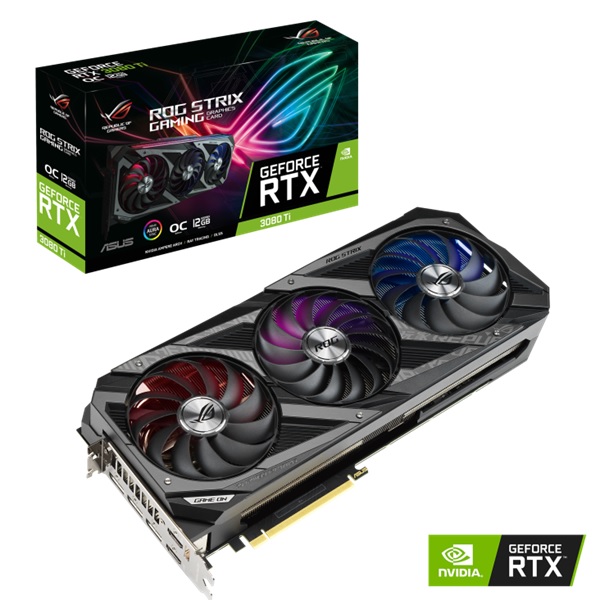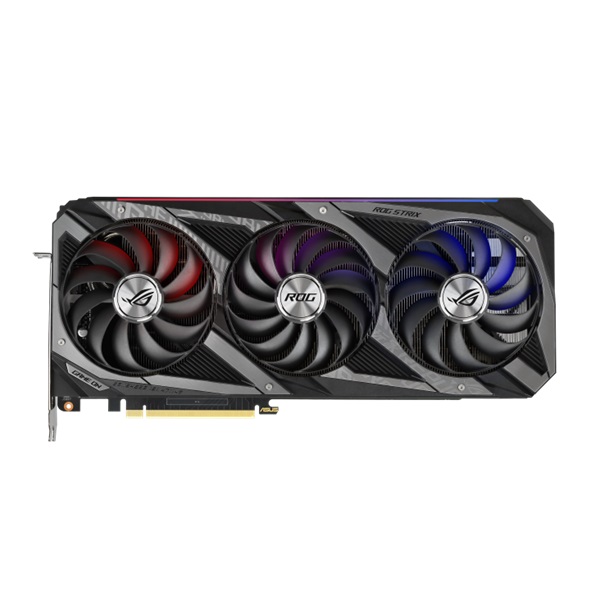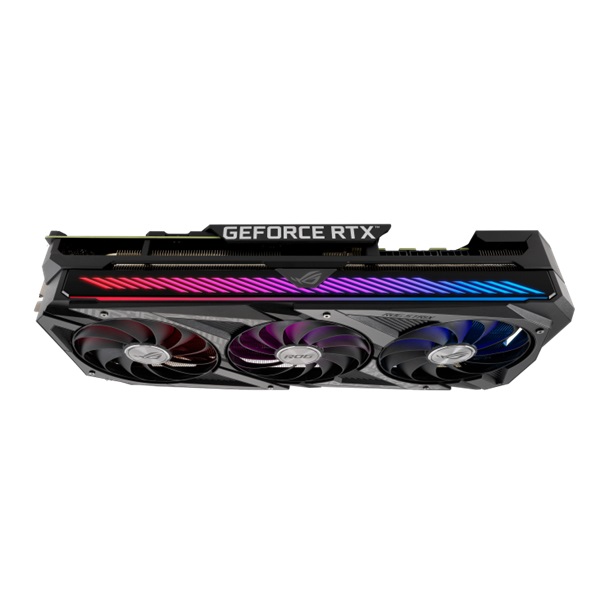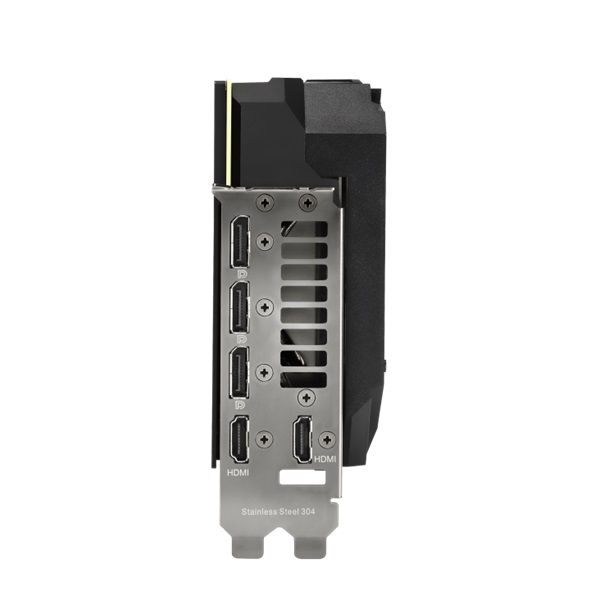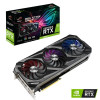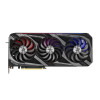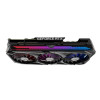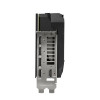MAXCONTACT
To get heat into the heatsink array efficiently, so that it can be whisked away by the powerful Axial-tech fans, we use a manufacturing process that improves the surface smoothness of the heatspreader at the microscopic level. The extra flatness allows for better contact with the die, helping to enhance thermal transfer.
TAKE FLIGHT
From top to bottom, the ROG Strix GeForce RTX™ 3080 Ti has been radically improved to accommodate the impressive new NVIDIA Ampere architecture and to deliver the next wave of gaming performance innovation to the market. A fresh design and more metal surrounds a grouping of Axial-tech fans. Last gen’s uniform fan layout has been usurped by a new rotation scheme and specialized roles for central and auxiliary fans. Below the blades, a larger, more impressive heatsink is ready for the most demanding thermal loads. The PCB has some new tricks up its sleeves, and even the backplate has received some performance-boosting changes. You’ve been waiting for the latest and greatest in graphics card design – and this is it.
AXIAL-TECH UPGRADES
Our Axial-tech fan design has been optimized for a new, larger heatsink that features more fins and surface area than last gen. The blade count has been increased on all three fans, with 13 on the center fan and 11 on the auxiliary fans. The barrier ring on the side fans has been slimmed down to allow for more lateral intake and to provide better airflow through the cooling array. The center fan’s extra blades and full-height ring provide boosted static pressure to blast air directly onto the heat spreader.
2.9-SLOT DESIGN
The heat spreader draws heat up into heatpipes that carry it through a fin stack that fills a large 2.9-slot footprint. Increasing the heatsink size compared to the last generation provides more thermal headroom to account for the new high-performance chipset.
*For illustration only
FRESH SHROUD
In addition to under-the-hood design changes, the ROG Strix features a new face with metal accents that mirror the design aesthetic of ROG and ROG Strix motherboards. Textured accents in a greyscale colorway blend seamlessly into subtle builds or make a striking impact while the card is vertically mounted and lit by chassis LEDs.
IT’S COOLER OUT BACK
Flipping the card around reveals more design improvements. A wide backplate vent and shortened PCB allow hot air to escape towards chassis exhaust fans instead of being recycled back into the cooler. A GPU bracket provides extra stability to the critical connection between die and heat spreader. The I/O bracket is made from stainless steel to protect ports and provide a more secure mount. A conveniently placed Dual Bios switch allows quick selection between “performance” and “quiet” mode for basic customization of the card’s default behavior without software.
FUNCTIONAL FRONT
Careful attention has been paid to the front of the GPU, as it’s the most visible part of the card in typical configurations. A new addressable RGB element can be customized with Armoury Crate to create a uniform look along with other ROG components. To fulfill the power demands of the GeForce RTX 3080 Ti, three 8-pin power connectors are present, along with an onboard circuit that monitors PSU rail voltage. The circuit is fast enough to catch any transients that result in the rail voltage dropping too low. If that happens, a red LED will light up to indicate a power supply issue. The Strix’s reinforced metal frame is also visible here, adding a literal layer of durability.
FUNCTIONAL FRONT
Careful attention has been paid to the front of the GPU, as it’s the most visible part of the card in typical configurations. A new addressable RGB element can be customized with Armoury Crate to create a uniform look along with other ROG components. To fulfill the power demands of the GeForce RTX 3080 Ti, three 8-pin power connectors are present, along with an onboard circuit that monitors PSU rail voltage. The circuit is fast enough to catch any transients that result in the rail voltage dropping too low. If that happens, a red LED will light up to indicate a power supply issue. The Strix’s reinforced metal frame is also visible here, adding a literal layer of durability.

